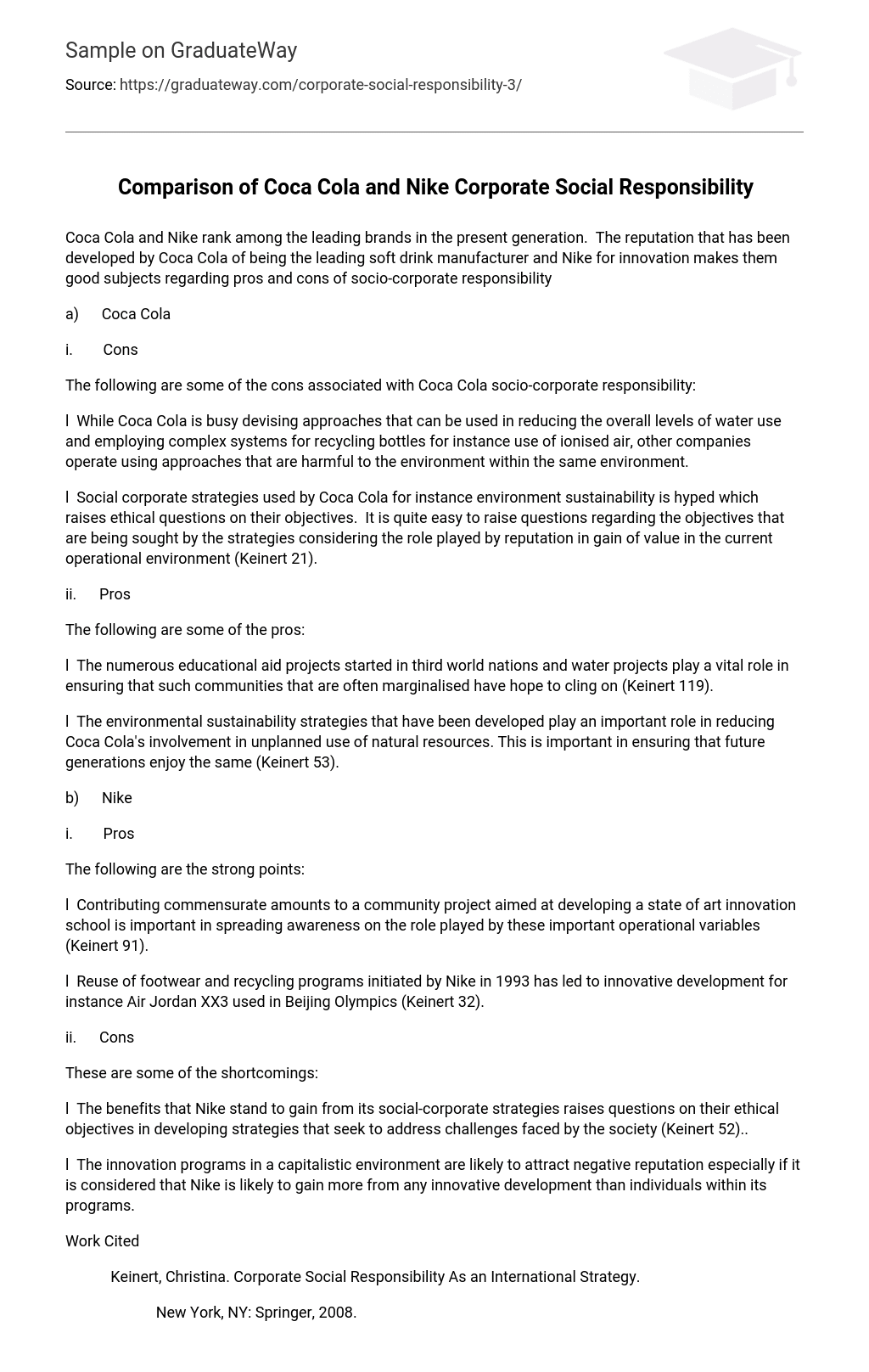Coca Cola and Nike rank among the leading brands in the present generation. The reputation that has been developed by Coca Cola of being the leading soft drink manufacturer and Nike for innovation makes them good subjects regarding pros and cons of socio-corporate responsibility
a) Coca Cola
i. Cons
The following are some of the cons associated with Coca Cola socio-corporate responsibility:
l While Coca Cola is busy devising approaches that can be used in reducing the overall levels of water use and employing complex systems for recycling bottles for instance use of ionised air, other companies operate using approaches that are harmful to the environment within the same environment.
l Social corporate strategies used by Coca Cola for instance environment sustainability is hyped which raises ethical questions on their objectives. It is quite easy to raise questions regarding the objectives that are being sought by the strategies considering the role played by reputation in gain of value in the current operational environment (Keinert 21).
ii. Pros
The following are some of the pros:
l The numerous educational aid projects started in third world nations and water projects play a vital role in ensuring that such communities that are often marginalised have hope to cling on (Keinert 119).
l The environmental sustainability strategies that have been developed play an important role in reducing Coca Cola’s involvement in unplanned use of natural resources. This is important in ensuring that future generations enjoy the same (Keinert 53).
b) Nike
i. Pros
The following are the strong points:
l Contributing commensurate amounts to a community project aimed at developing a state of art innovation school is important in spreading awareness on the role played by these important operational variables (Keinert 91).
l Reuse of footwear and recycling programs initiated by Nike in 1993 has led to innovative development for instance Air Jordan XX3 used in Beijing Olympics (Keinert 32).
ii. Cons
These are some of the shortcomings:
l The benefits that Nike stand to gain from its social-corporate strategies raises questions on their ethical objectives in developing strategies that seek to address challenges faced by the society (Keinert 52)..
l The innovation programs in a capitalistic environment are likely to attract negative reputation especially if it is considered that Nike is likely to gain more from any innovative development than individuals within its programs.
Work Cited
Keinert, Christina. Corporate Social Responsibility As an International Strategy.
New York, NY: Springer, 2008.





